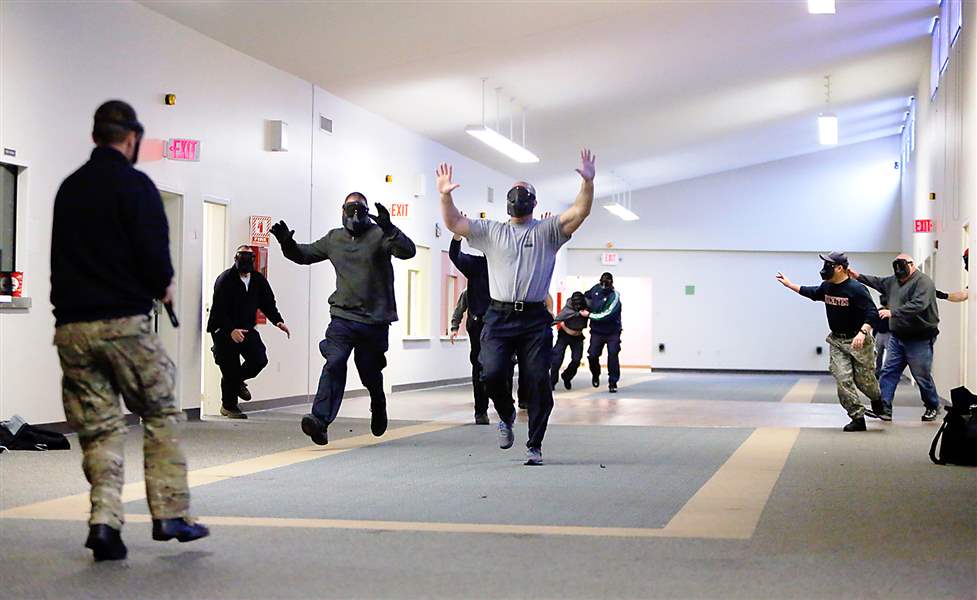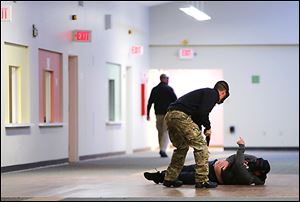
Split-second calls take training
Week’s course gives officers expertise to share with peers
4/12/2013
During an active-shooter training scenario, a responding officer, left, arrives at the scene of a shooting as others portraying victims flee in chaotic fashion, creating noise and confusion. The officer has to apply his classroom training to handle the situation.
THE BLADE/ANDY MORRISON
Buy This Image

During an active-shooter training scenario, a responding officer, left, arrives at the scene of a shooting as others portraying victims flee in chaotic fashion, creating noise and confusion. The officer has to apply his classroom training to handle the situation.
All the officer knew was that shots were fired inside a classroom.
Students charged from the room and stampeded down a long hallway, yelling and shouting — most ignoring the police officer as he pushed through the crowd.
“Where is he?” the officer shouted.
The officer, the gunman, and the students were role playing during an active-shooter scenario as part of an exercise to train officers from several agencies on how to respond to a real-life situation.
The training, sponsored by the University of Toledo and conducted by Response Options, started Monday and continues through today. Response Options is a Texas firm that teaches methods of handling critical incidents, such as Thursday’s active-shooter scenario in which a single office deals with a shooter in a building with several adults or children.
On Thursday, about two dozen trainees ran through a number of real-life scenarios, including the classroom mayhem, at the former Veterans Affairs Clinic building on Glendale Avenue.

The ‘responding’ officer in a scenario approaches a ‘supposed’ victim to assess his injuries and ask what information the victim can give the officer about the whereabouts of the shooter.
After this week’s training — which also includes classroom instruction and time at a shooting range — the officers will be certified instructors, able to train their respective departments on the solo-engagement technique, said Jeff Newton, UT police chief.
Four UT officers, not including the chief, were part of the training, as well as at least one officer from Bowling Green State University. Agencies from around northwest Ohio and southeast Michigan were represented.
Solo engagement, Chief Newton said, is a different philosophy than other techniques used by police in the past, but “I think this is the right one.”
In solo-engagement, officers are taught how to enter a building, “find the threat and eliminate it,” Chief Newton said. The last time UT police engaged in active-shooter training was in 2007 using the quad method, where police would wait until four officers were on scene Chief Newton said.